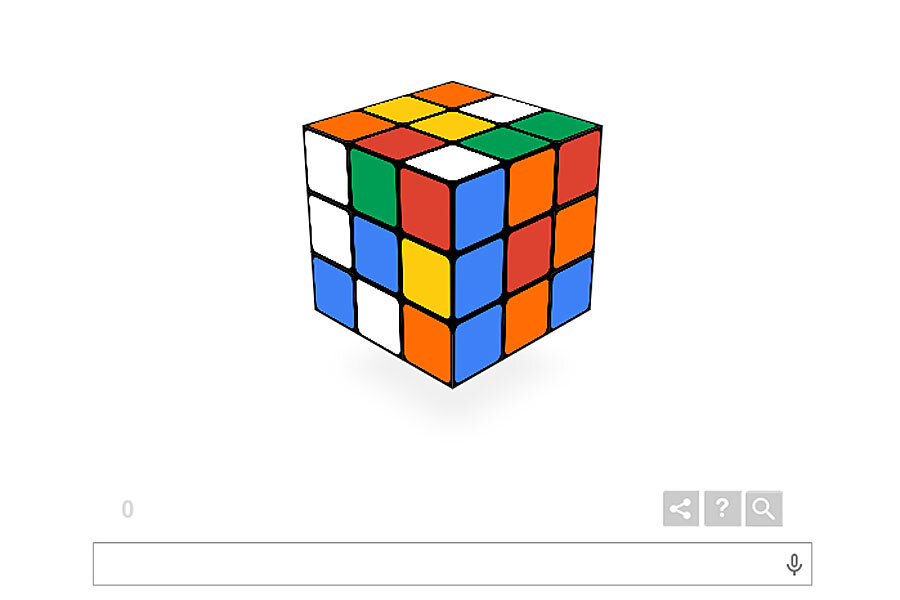Rubik's Cube invention: Can you solve it in 20 moves?
Loading...
Beware today's Google Doodle. It could be a major time suck.
In celebration of the 40th anniversary of the Rubik's Cube, Google has created a working online version of the puzzle – and will auto-count the number of moves to completion (bottom left). The current world record: 20 moves.
The world's best-selling toy (350 million and counting), was invented in 1974 by Erno Rubik, a Hungarian architecture professor who wanted a working model to help explain three-dimensional geometry. His first designs of the puzzle were made of wood blocks held together with paperclips. Eventually, Rubik created this little game that even he didn't know how to solve. It took him a month, initially.
In the intervening four decades, speedcubers have turned solving the 3X3X3 cube into a high-velocity art form. (Dutch teen Mats Valk is the current world record holder at 5.55 seconds). For a really good window on speedcubing, check out this piece in The Guardian. Or for a fast, under-six-second detour from this article, watch Valk's slight of hand moves on this YouTube video.
The other category of Rubik's Cube-solvers is all about the Fewest Moves, which is less about speed and more about precision. (In fact, speedcubers actually use about twice as many moves as the fewest movers). The reigning Fewest Moves Challenge Champion is Tomoaki Okayama. In July of 2012 at the Czech Open, the Japanese whiz solved the puzzle in 20 moves, according to the World Cube Association. Watch the solution in slow motion on YouTube. Just four years earlier, The Christian Science Monitor was lauding the efforts of Stanford-trained mathematician Tomas Rokicki for using his PC to solve the puzzle in 25 moves (and those calculations took 1,500 hours).
If you think the Google Doodle is cool, you might be a candidate for the "Beyond Rubik's Cube" exhibit at the Liberty Science Center in Jersey City, N.J. Not only can you get a peek at one of the original Rubik models, you can play the 26-foot high Groovik's Cube. This puzzle was created for the 2009 Burning Man Festival in Nevada by Mike Tyka and GroovLabs, a Seattle-based art collective. Rather than mechanically twisting, Groovik's Cube uses shifting and changing LED lights to mimic the motion of Rubik’s Cube.
If you don't want to travel to New Jersey, you can also play an online version.
Perhaps the most enduring contribution of this little cube has less to do with these various incarnations as with instilling a generation with a love of puzzles, and inspiring us to tackle the challenges before us. Or as Rubik himself once said: “If you are curious, you’ll find the puzzles around you. If you are determined, you will solve them.”








